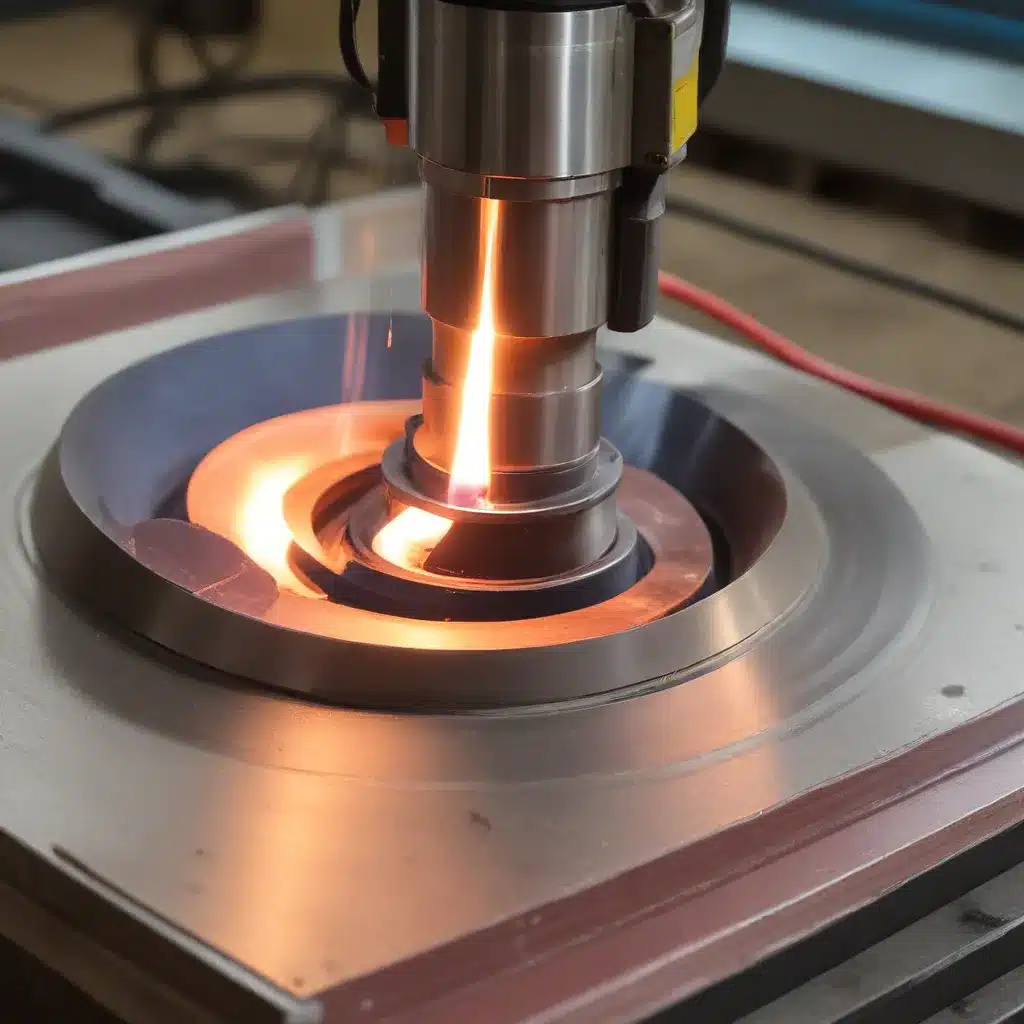
As an experienced welder and metal fabricator, I’ve seen my fair share of welding and fabrication techniques come and go. But one method that has consistently proven to be a game-changer in my line of work is induction heating. In this article, I’ll share some of my personal insights and practical tips on how to leverage the power of induction heating to optimize your fabrication processes.
Mastering the Art of Induction Heating
Induction heating is a process that utilizes electromagnetic fields to generate heat in conductive materials, such as metals. This method offers a range of advantages over traditional heating techniques, including precise temperature control, faster heating times, and improved energy efficiency. As a seasoned fabricator, I’ve learned to harness the full potential of induction heating to tackle even the most complex metal projects.
One of the key benefits of induction heating is its ability to precisely target the area you need to heat, without affecting the surrounding materials. This level of control is crucial when working with delicate components or intricate designs. By carefully adjusting the frequency and intensity of the electromagnetic field, I can effectively heat the specific zones I need, minimizing the risk of warping or distorting the rest of the workpiece.
Leveraging Induction Heating for Precision Welding
Precision welding is an essential skill in the world of metal fabrication, and induction heating can be a powerful ally in this endeavor. By preheating the joint area with induction, I can ensure that the base material is at the optimal temperature for welding, allowing for a smooth, consistent bead and a stronger, more uniform joint.
One of my favorite tricks is to use induction heating to precisely control the heat input during the welding process. By carefully monitoring the temperature of the joint and adjusting the induction settings accordingly, I can prevent overheating, minimize distortion, and achieve a consistently high-quality weld, time after time.
Unlocking the Secrets of Induction Heating for Bending and Shaping
Bending and shaping metal components is another area where induction heating shines. By strategically heating the areas that need to be bent or formed, I can significantly reduce the amount of force required and minimize the risk of cracking or deformation.
For example, when working with thick-gauge materials, I’ll use induction heating to soften the metal in the target areas, allowing me to apply less pressure during the bending process. This not only makes the job easier, but it also helps to maintain the structural integrity of the workpiece.
Harnessing Induction Heating for Heat Treating and Stress Relief
In addition to welding and forming, induction heating is also an invaluable tool for heat treating and stress relief. By precisely controlling the temperature and cooling rates, I can perform a variety of heat treatment processes, such as annealing, hardening, and tempering, to optimize the mechanical properties of the metal.
One of my go-to techniques is using induction heating for stress relief. By uniformly heating the entire workpiece and then slowly cooling it, I can effectively release any internal stresses that may have built up during the fabrication process. This helps to prevent warping, cracking, or other distortions, ensuring that the final product meets the highest standards of quality.
Optimizing Induction Heating with the Right Equipment and Techniques
Of course, harnessing the full potential of induction heating requires the right equipment and a deep understanding of the underlying principles. Over the years, I’ve experimented with a variety of induction heating setups, from compact bench-top units to large-scale industrial systems, and I’ve learned a thing or two about what works best.
One key factor to consider is the frequency of the electromagnetic field. Lower-frequency induction heating systems are better suited for larger, thicker workpieces, as the penetration depth is greater. In contrast, higher-frequency systems are more effective for heating smaller components or for surface heating applications.
Another important aspect is the coil design. The shape and size of the induction coil can significantly impact the heating pattern and efficiency. I’ve found that custom-designed coils, tailored to the specific geometry of the workpiece, often yield the best results.
Troubleshooting and Mastering Induction Heating Challenges
As with any fabrication technique, there can be challenges and pitfalls when working with induction heating. One common issue I’ve encountered is uneven heating, where certain areas of the workpiece heat up faster than others.
To address this, I’ve learned to experiment with different coil configurations, adjust the power output, and even incorporate water-cooled coils to create a more uniform heating pattern. It’s all about finding the right balance of parameters to suit the specific requirements of the project.
Another challenge is dealing with the rapid heating and cooling associated with induction heating. This can lead to distortion, cracking, or other defects if not managed properly. To mitigate these risks, I’ve developed a keen eye for monitoring temperature changes and adjusting my fabrication processes accordingly.
Embracing the Power of Induction Heating for Innovative Solutions
As a seasoned metal fabricator, I’ve come to view induction heating as a true superpower in my arsenal. By mastering the techniques and leveraging the unique advantages of this technology, I’ve been able to tackle even the most complex and demanding fabrication projects with confidence.
Whether I’m precision welding intricate components, shaping and bending thick-gauge materials, or performing heat treatment operations, induction heating has consistently proven to be a game-changer. It’s a testament to the power of innovation and the endless possibilities that exist when you embrace the latest advancements in the world of metal fabrication.
If you’re a fellow welder or fabricator looking to take your skills to the next level, I highly recommend exploring the world of induction heating. It’s a journey that has paid off immensely for me, and I’m confident it can do the same for you. So, what are you waiting for? Discover the full potential of induction heating at https://theweldfab.com/ and revolutionize your fabrication processes today!


